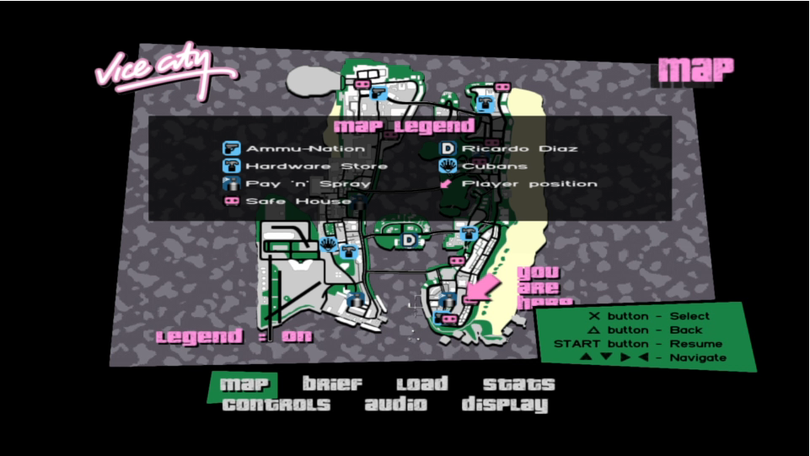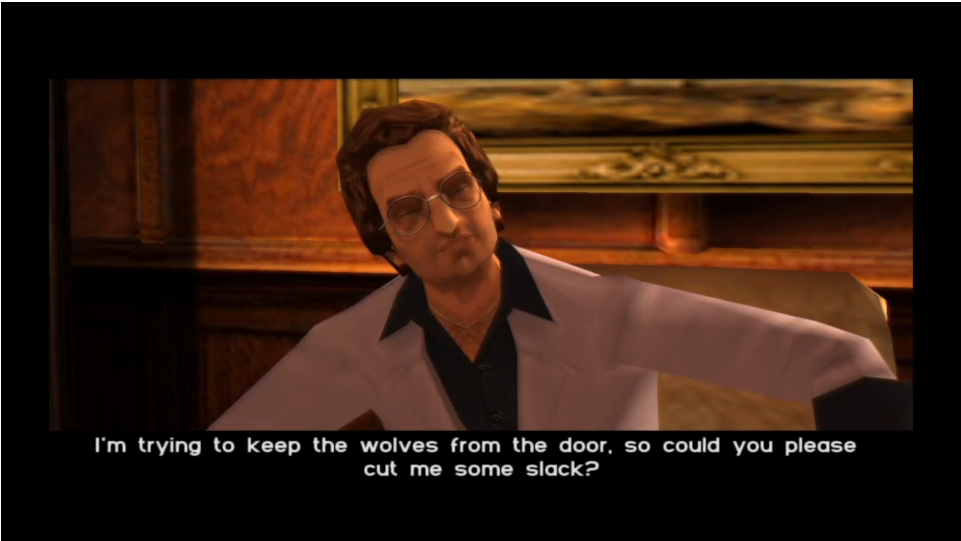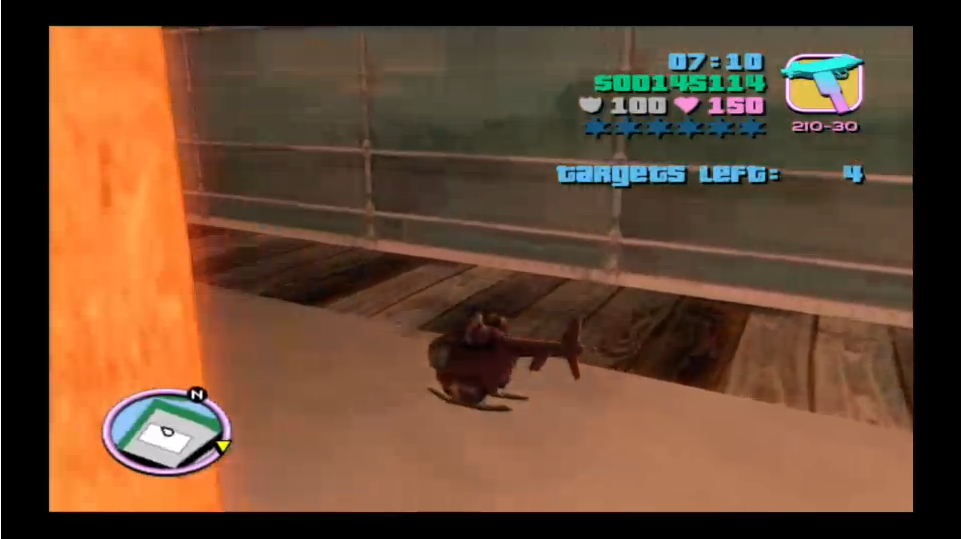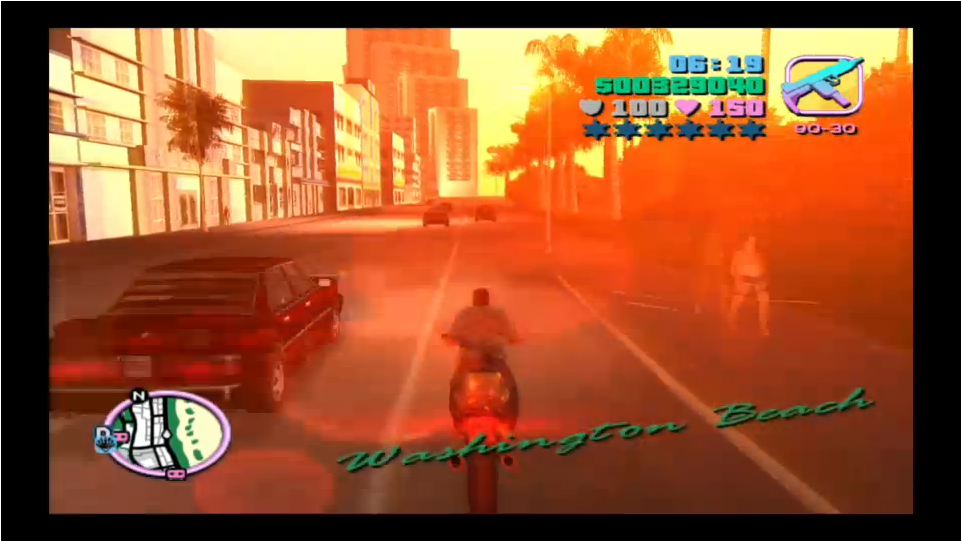Why Grand Theft Auto: Vice City offered the most player choice

Grand Theft Auto: Vice City is rated "M" for mature audiences over the age of 17 by the Electronic Software Ratings Board.
Heralded upon its release in 2002, Grand Theft Auto: Vice City is a game that has a dubious honor I will call "the middle child syndrome."
Despite voice acting from Hollywood megastars like Ray Liotta (protagonist Tommy Vercetti), Burt Reynolds (real estate mogul Avery Carrington), NFL tough guy Lawrence Taylor (car salesman and former football pro BJ Smith), Dennis Hopper (porn movie auteur Steve Scott), Debbie Harry (taxi controller) and more, in the years since its release Vice City has been overshadowed by its predecessor GTA3, which rocketed the franchise into 3-D, and its follower San Andreas, heralded at the time for its massive, realistic world.

voices to 2002's "Grand Theft Auto: Vice City."
The high-definition era of Rockstar's signature franchise has revisited Liberty City and San Andreas, but never returned to the sandy, satiric shores of the GTA universe's Miami doppleganger. Some would argue that's because the pastels and excess that made sense in a game set in the 1980s wouldn't work with the new approach Rockstar has taken with the franchise. But many of those themes were present in Grand Theft Auto 5, set in southern California, and Michael De Santa was the closest thematically to Liotta's Vercetti that we've seen inhabiting the shoes of a GTA protagonist since 2002 (white man w/ ties to organized crime).
After achieving 100 percent completion in GTA3 recently, I fired up Vice City, a game I spent a lot of time with in the early 2000s both on my Playstation 2 and PC. The game's look and feel were immediate hooks, but many of the game's missions weren't as memorable as GTA3's were when I was replaying that game. At first, I thought this might be another reason Vice City gets lost in the shuffle of Rockstar's GTA history. But the truth is, it's because Vice City offers greater freedom, while at the same time funneling the player toward a satisfying conclusion to the main storyline, something that subsequent GTA games haven't been able to recapture.
An early mission in Vice City has you attending a yacht party thrown by Colonel Juan Cortez (voiced by 'Goonies' alumnus Robert Davi). At this party, you meet every character of consequence you'll see/work for later in the game: Carrington, Ricardo Diaz (Luis Guzman), Scott, Smith, members of the fictional rock group "Love Fist." Rockstar sets the table for the story of revenge and conquest you're about to embark on.
Then, the first portion of the game has you learning Vice City's new mechanics, like changing outfits, driving motorbikes and piloting helicopters. While these tutorials aren't perfect by any stretch of the imagination (can you say 'Demolition Man'?), the early missions serve as a stepping stone to the freedom that opens up once you waste Diaz.

early mission?
From there, the decision falls to the player how to proceed. Which assets do you want to acquire? Do you go after the flashy Malibu club and pull off the series first true "heist" sequence (a mission structure revisited in just about every GTA game since)? Do you work for Scott, and find out some secrets about conservative congressman Alex Shrub? Do you spend the most money, but also attain the greatest reward, completing the missions for the Print Works, essential to unlocking the final showdown with mobster Sonny Forelli (Tom Sizemore)? Maybe street racing is your deal. Smith's Sunshine Autos is for you.
In a game series that emphasizes player choice, the way your reach the end game in Vice City is perhaps the most revolutionary that was seen in the franchise until the introduction of heists into GTAV. You choose what story elements you want to unlock first, rather than being guided through a series of missions that will ultimately result in the final confrontation. Not even San Andreas, voted the best GTA game in a fan poll just before the release of GTAV, had that kind of freedom. It's also a callback to the early 2D roots of the GTA series, which required only that you attain a "high score" (cash in the GTA universe) to progress through the game.
Vice City is an imperfect game, to be sure. It's targeting system is still awful, compared to later GTA titles, and the motorbikes just don't handle as well as they could. Many of the game's missions fall prey to the constricted structure of early 3D GTA titles: go here, kill some guys, pick this up, return.

its sequel.
But in terms of player choice, GTA: Vice City is perhaps one of the earliest and most successful experiments in the franchise. And it's still a blast to have that freedom at your fingertips, 14 years later.
